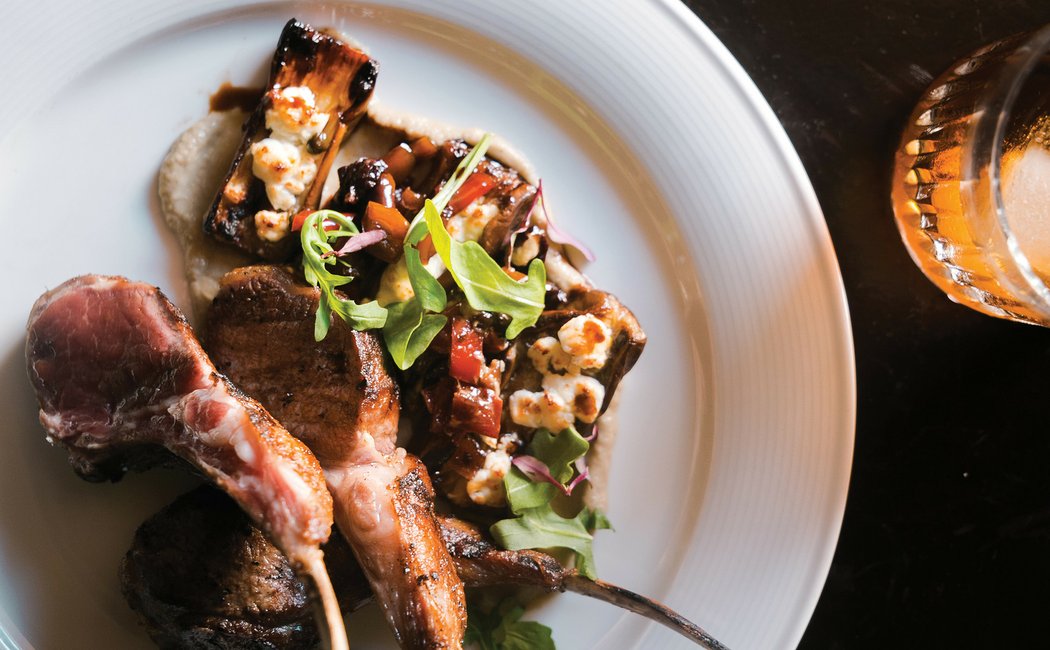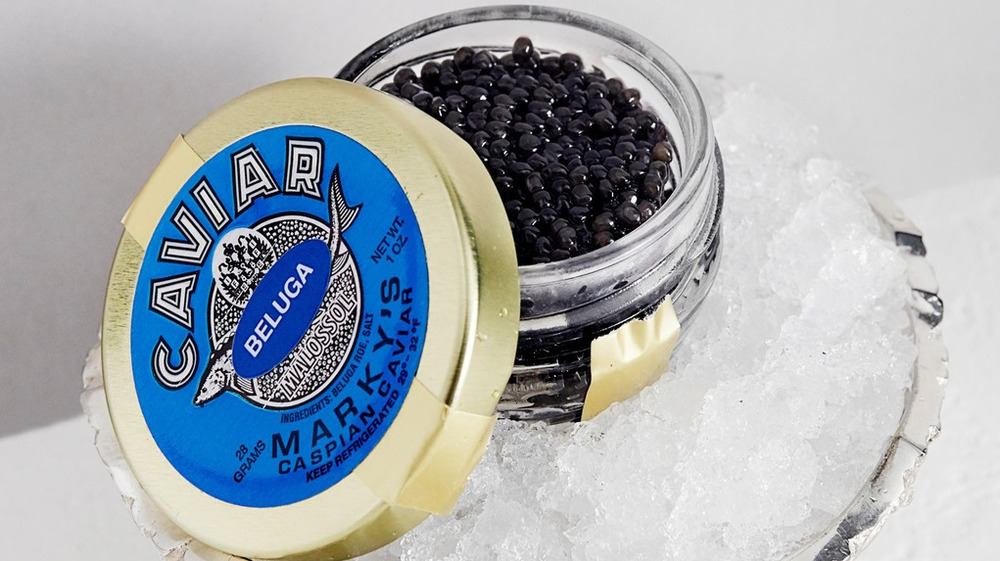One South Florida man’s quest to produce beluga caviar is finally achieved. And you can taste it here.
By Ben Crandell
South Florida Sun Sentinel | Feb 18, 2021 at 4:18 PM
Pure beluga caviar, a banned U.S. import, is a rare dining experience unless you’re a member of the international jet set. Or a South Florida resident.Beluga sturgeon aren’t much to look at, but Miami’s Mark Zaslavsky has carried on a decades-long affair with these critically endangered fish, pampering them for years in exchange for caviar made from their eggs.
The co-owner of Marky’s Caviar Lounge at the Seminole Hard Rock Hotel & Casino in Hollywood, Zaslavsky is the only source in the United States for pure beluga caviar.
The caviar comes from long-gestating beluga on a sturgeon farm he co-founded near the Florida-Alabama border shortly before a 2005 U.S. ban on imports of caviar from the fish native to the Caspian Sea. These fish can take 10 to 15 years to produce eggs, and the first harvest from his beluga arrived in June.
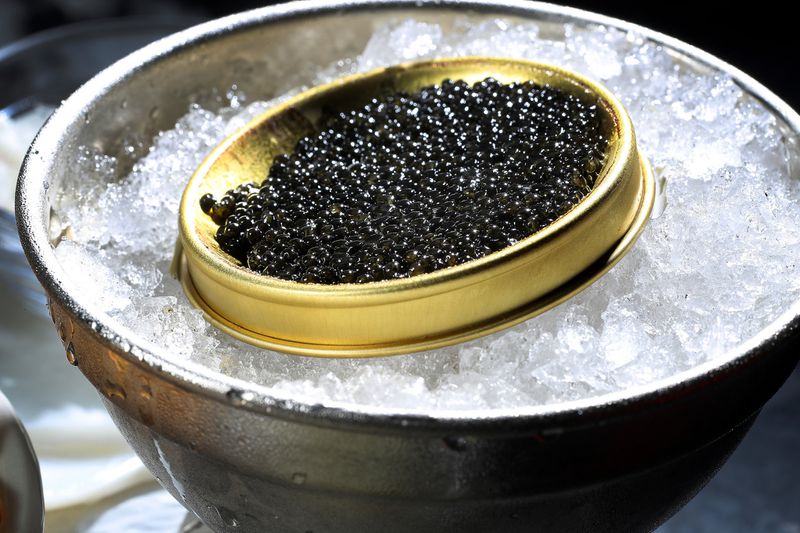
Marky’s pure beluga caviar ranges widely in price depending on quality — top-shelf currently goes for $500 an ounce, though it has listed at more than $800. Even Zaslavsky has a hard time describing the magic of tasting it for the first time.
“What is the magic of a first kiss? It’s the event, who you share it with. It’s buttery and pleasant. And, most important, you want to take more,” Zaslavsky says.
Unlikely refugees
The proprietor of Marky’s Gourmet Store in Miami’s Upper East Side since 1983, Zaslavsky could see at the turn of the century what was happening to the dwindling sturgeon population of the Caspian Sea, the massive lake bordered by Kazakhstan, Turkmenistan, Iran, Azerbaijan and Russia, which was producing 90 percent of the world’s caviar.
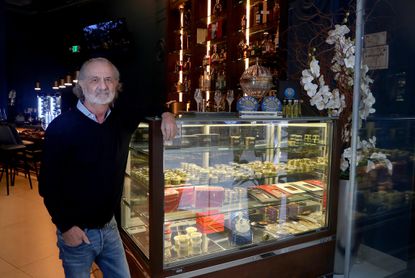
Beluga are one of 27 species of sturgeon found in lakes, rivers and coastlines or Eurasia and North America, including Florida. Less than half of the species produce eggs used in caviar.
Beginning in 2003, he made 13 flights from Europe with boxes of five or six live sturgeon weighing 5 to 10 pounds each, transferring them to a truck for a 7-hour drive to Bascom, Florida, home to the 120-acre Sturgeon Aquafarms. The shipments included beluga, sevruga, sterlet, osetra and Siberian sturgeon.
These flights mirrored one made by Zaslavsky in 1980 as a refugee from a small city south of Kyiv, Ukraine, then part of the Soviet Union. He was shuttled around Europe before arriving in Italy, where immigration officials asked what American city he’d like to land in.
“I had never heard about one city in America, because we had no information,” says Zaslavsky, 68. “I said, ‘I’ve been living in a very cold area in Russia, so if it’s possible, somewhere where it’s not cold.’”
He’s been in Miami ever since, working as a dishwasher, bus boy and short-order cook before opening a small store.
“I came in boots and heavy sweater. But I love it. I will die here. This is my city, my country. I will do anything I can do for this country,” says Zaslavsky, who became a U.S. citizen in 1985.
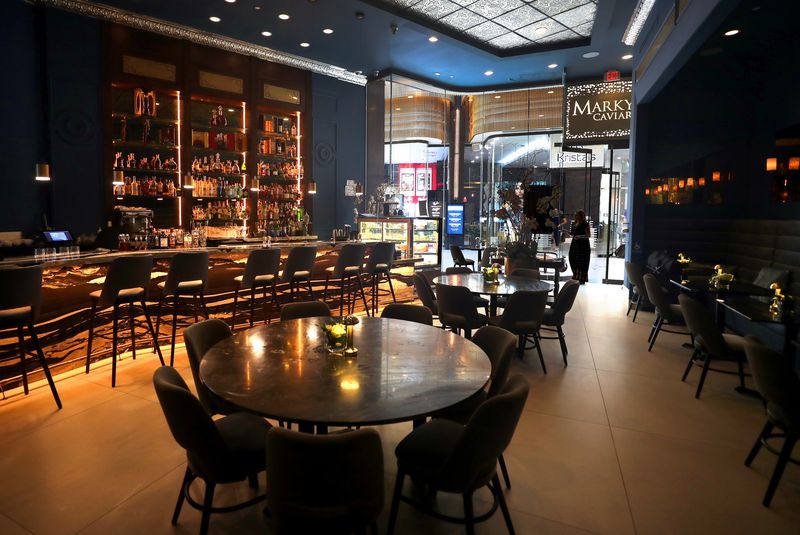
Tastes like Florida
Sturgeon typically take a decade or more to reach egg-producing maturity and while he was waiting Zaslavsky was granted an exemption by the U.S. Fish and Wildlife Service, allowing him to sell his Florida-grown beluga caviar commercially.
The decision was based on a commitment by Zaslavsky, business partner Mark Gelman and Sturgeon Aquafarms to work on conservation programs for wild beluga sturgeon populations in the Caspian Sea and Volga River.
Along with work around the globe with the Sturgeon Stewardship Council and the World Sturgeon Conservation Society, Sturgeon Aquafarms has sent 160 million young beluga sturgeon to Azerbaijan.
“We were convinced that [Zaslavsky’s] activity supports conservation of beluga in the wild,” said Rosemarie Gnam, of the U.S. Fish and Wildlife Service, said in an interview with Bloomberg News.
The site of Sturgeon Aquafarms was chosen because of its proximity to the cool water of the upper Floridan aquifer, which mimics their natural environment. Zaslavsky says fish raised in this water produce cleaner tasting eggs.
“It’s very difficult to replicate the polluted water of the Volga River in Russia,” Zaslavsky says, laughing. “But this fish is grown in drinking water, the same water that goes in Zephyrhills water.”
Sturgeon Aquafarms has grown more than 80,000 sturgeon over the years, making it one of the largest sturgeon farms in the world. The current population is 10,350.
Of the 60 or so fish that Zaslavsky flew across the ocean more than 15 years ago, a half-dozen are still with him as occasional breeders. Once 5 or 10 pounds, they now weigh more than 300. They likely will live 50-60 years.
“They are retired in a separate tank, in cool water. We feed them, and that’s it. They are in a place that I’d like to be very soon. A quiet, nice retirement,” Zaslavsky says, laughing.
Where to enjoy it
There is a pageantry to a restaurant caviar service, but its pleasures are simple, says Zaslavksy, who grew up in Ukraine on a meat-and-potatoes diet (“mostly potatoes”).
During a recent visit to Marky’s Caviar Lounge at the Hard Rock, he offered a brief tutorial on how to appreciate good caviar, from the uniformity of color and size of the eggs, their texture and pliancy, to the subtle scent and the rush of flavor that should conjure an “ocean breeze.”
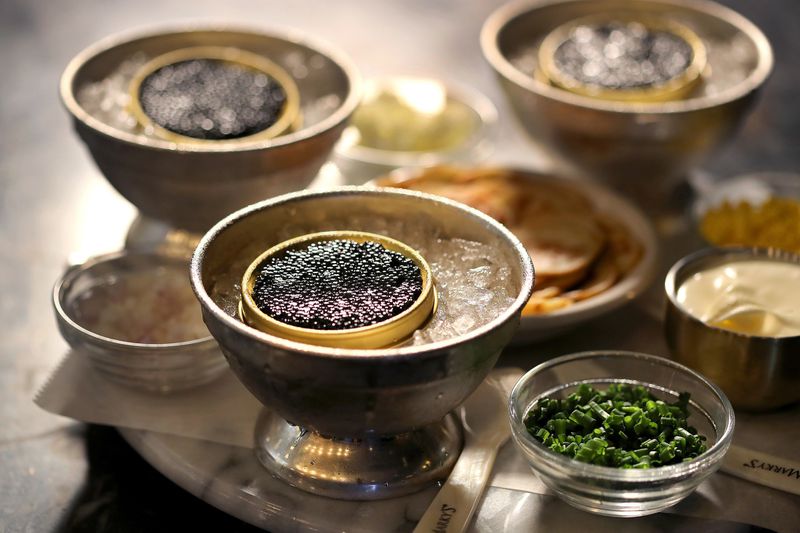
A traditional caviar service includes small bowls of diced egg yolk and egg white, chives, onion and crème fraiche. The critical element, however, is the stack of small, palm-sized blinis, a kind of pancake traditional in Russia and Ukraine. Marky’s blinis are made locally by two Russian women.
Zaslavksy prefers caviar with little fuss and accompaniment, his blini bisected by a line of crème fraiche, on which he heaps several liberal dollops of deep green caviar before folding it all like a taco and inserting it whole into his mouth.
“Have it with a loved one, with a glass of champagne or vodka — very cold, frozen vodka. That will be the best Valentine’s Day you’ve ever had,” he says.
And it’s an aphrodisiac?
“I was a grandfather at 38,” he says, dryly, his face giving way to a grin.Along with the flagship Marky’s Caviar Lounge, which he co-owns with Bob Woltin, Zaslavsky’s caviar can be found at Marky’s Gourmet Store in Miami, Beluga Bar at Aventura Mall and on the website Markys.com. It also is available at Marky’s Caviar retail space on New York’s Madison Avenue and its back-of-the-house, Michelin-approved cafe, Hūso (the scientific name for beluga sturgeon is Huso huso).
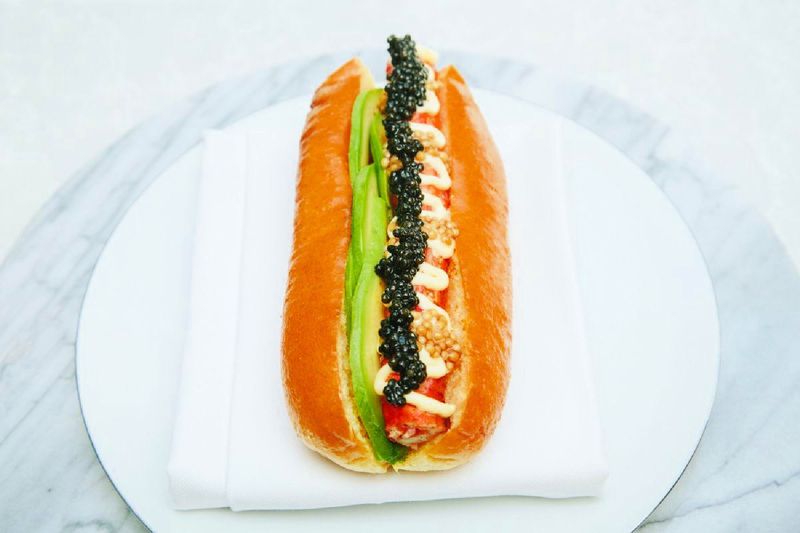
At Hūso, Chef Buddha Lo has taken a creative approach to caviar, from pairings with ice cream to the popular Hūso Dog, a king crab leg topped with Beluga di Venezia caviar (a hybrid of beluga and Siberian sturgeon) on a toasted brioche bun. The dish, the chef’s ode to New York street food, costs $45 at Marky’s Caviar Lounge.
Marky’s menu also has salads and sandwiches, including an Australian Wagyu beef burger ($20) and black truffle grilled cheese ($17), as well as caviar fries made with caviar and smoked trout roe ($27).
On Feb. 13-14, Chef Buddha will host a Valentine’s-themed tasting menu at Marky’s Caviar Lounge, which shares the ocean-blue walls and 12-table intimacy of its sister restaurant in New York. The five-serving menu includes caviar and oysters, lobster, prime striploin steak and multiple dessert options, and costs $110 per person (plus tax/tip).
Also available on those nights will be three caviar flights, each including three 1-ounce servings, for $150, $400 or $800.
Marky’s Caviar Lounge is at 1 Seminole Way, Hollywood, in the new retail wing of the Hard Rock’s $1.5 billion expansion. Hours are 4:30-11 p.m. Sunday-Thursday, 4:30 p.m.-1 a.m. Friday-Saturday. Call 954-314-7226 or visit MarkysCaviarLounge.com.
Source: South Florida Sun Sentinel




